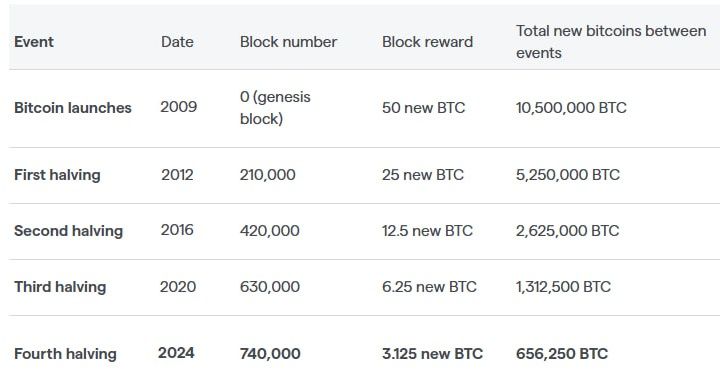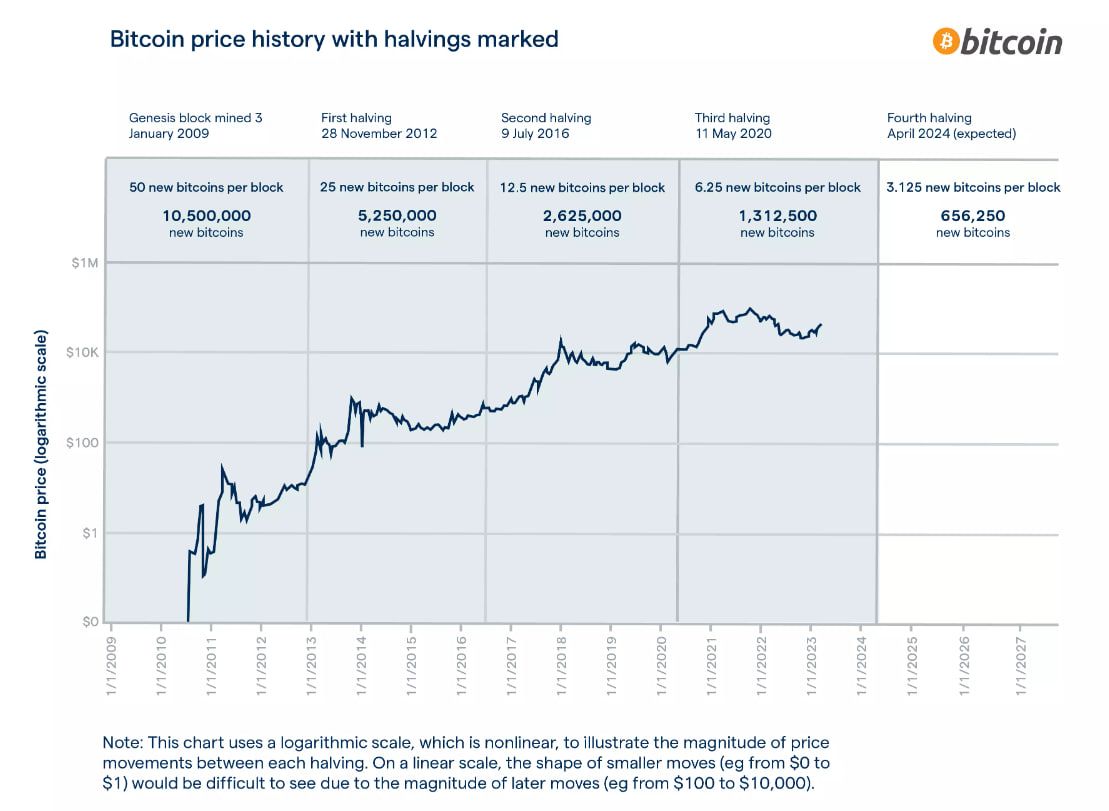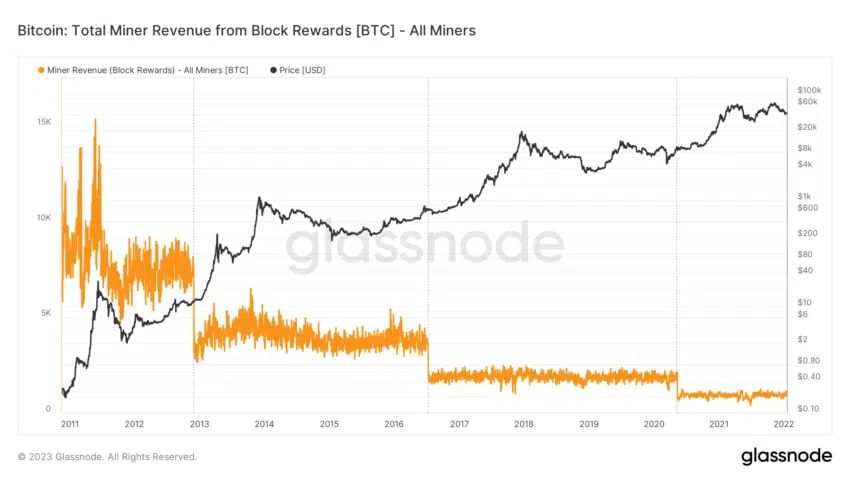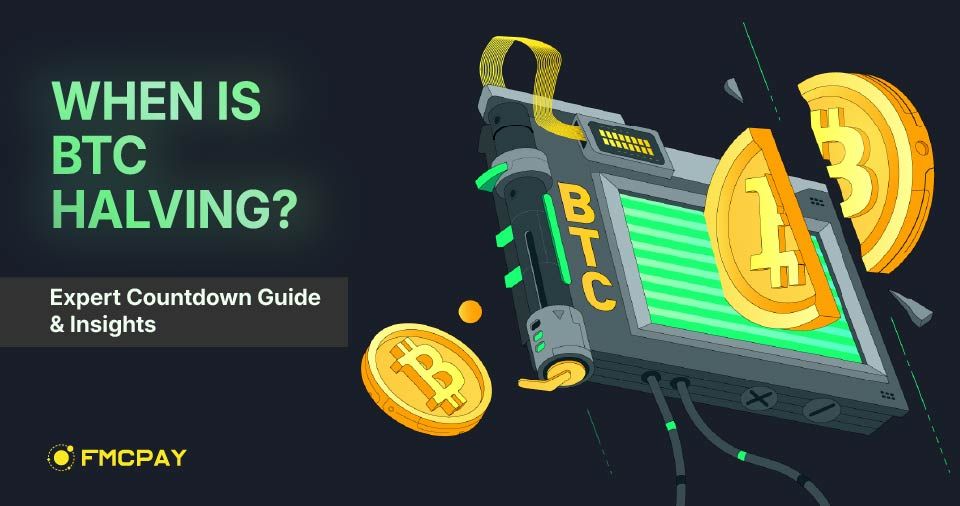As the crypto community eagerly anticipates the next Bitcoin halving event, understanding when is BTC halving and its implications becomes crucial for investors and enthusiasts alike. Here’s your comprehensive guide from FMCPAY to when is BTC halving and what it means for the future of cryptocurrency.
1. When is BTC Halving?
Bitcoin halving is a monumental event in the cryptocurrency world. But when is BTC halving exactly, and why does it matter so much to investors and the crypto community? Let’s dive into the history and importance of Bitcoin halvings and how they work.
1.1. What Is BTC Halving?
The BTC Halving (or Bitcoin Halving) refers to the programmed reduction of Bitcoin block rewards that miners receive for validating transactions. Introduced by Bitcoin’s anonymous creator, Satoshi Nakamoto, this mechanism is built into Bitcoin’s code to control its supply and mimic the scarcity of precious metals like gold.
Regularly, the BTC halving takes place once every 4 years. Each BTC halving reduces the rewards for miners by 50%, which means they receive half the BTC for each mined block after a halving event.
1.2. BTC Halving History
The first BTC halving took place in 2012, cutting the original block reward from 50 BTC per block to 25 BTC. Subsequent halvings occurred in 2016 and 2020, further reducing block rewards to 12.5 BTC and then 6.25 BTC, respectively. Each BTC halving event historically has a profound effect on Bitcoin’s price, influencing investor sentiment and often contributing to a long-term bullish trend.

Historically, BTC halvings have triggered major market events and even “bull runs” as the reduced supply creates scarcity, driving up demand. For instance, Bitcoin’s first halving in 2012 drove its price from $12 to $130 within six months. In 2016, the price jumped from around $660 to $900 after the halving, and following the 2020 halving, BTC soared from about $8,600 to $15,700 in half a year.
Each halving contributes to Bitcoin’s reputation as a store of value, as limited supply meets heightened demand. However, they also bring short-term market volatility, and prices don’t always increase right after the halving.
2. When is BTC Halving 2024?
Following Bitcoin’s code which halves rewards every 210,000 blocks, the 2024 BTC halving was set to occur at 840,000th block. This timing was estimated to fall between April and May. So when is the BTC halving 2024 exactly? This fourth halving took place on April 20, 2024, marking the day Bitcoin’s block rewards were officially reduced from 6.25 BTC to 3.125 BTC per block.
The months leading to April 2024 saw increased market speculation and media coverage on when is BTC halving and its likely impact. Although Bitcoin prices surged slightly after the halving, market participants recognize that price changes often manifest over a longer period, as scarcity gradually influences supply and demand dynamics.
Many investors, particularly long-term holders, view halvings as opportunities for value growth, expecting BTC’s price to appreciate in the following months or even years.
3. Impact of the 2024 BTC Halving
BTC halvings impact the cryptocurrency’s economics by directly influencing supply. With rewards cut to 3.125 BTC per block, less Bitcoin enters circulation, potentially increasing demand and driving prices higher. Understanding when is BTC halving is essential for investors and miners, as these events create scarcity that can positively impact Bitcoin’s long-term valuation.
3.1. Market Dynamics and Price Impact
Historical data shows that when is BTC halving approaching, market behavior often follows certain patterns. First, there’s often a pre-halving accumulation phase, where investors anticipate scarcity, increasing demand. This period is typically followed by heightened volatility around the halving event as traders adjust strategies based on shifting rewards.
Post-halving, a price discovery phase usually unfolds as the market recalibrates to the reduced supply of new BTC. Over time, this recalibration often leads to long-term appreciation trends, reflecting Bitcoin’s growing scarcity and solidifying its appeal as a store of value.

3.2. Supply Constraints and Demand
The reduction in mining rewards from the BTC halving amplifies Bitcoin’s scarcity, making it an even more attractive asset for investors seeking to hedge against inflation. As fewer Bitcoins are mined each day, existing coins become more valuable, drawing attention from those looking for long-term storage of value.
This dynamic has supported previous price gains, leading many to speculate on similar outcomes in the next post-halvings. The question when is BTC halving remains a central topic as the market anticipates Bitcoin’s potential to reach new all-time highs.
3.3. Mining Challenges and Network Security
The halving reduced block rewards by half, which could make mining less profitable, especially for operations with higher costs. Some miners might struggle to cover expenses, potentially reducing the network’s hash rate.
However, larger and more efficient mining setups often compensate for smaller miners’ departure, helping maintain the network’s security. Each halving refines the mining landscape, favoring those who can operate sustainably under the new reward system.
3.4. Long-Term Price Predictions
Many analysts use the Stock-to-Flow (S2F) model to predict Bitcoin’s future price based on its scarcity post-halving. This model estimates price increases as new Bitcoin issuance drops.
Although some critique this approach, citing that various market factors influence Bitcoin’s price, S2F’s predictions have aligned reasonably well with BTC’s price movements after previous halvings. As with all models, however, caution is advised, and external market factors must be considered.
4. When is the Next BTC Halving?
Knowing when is BTC halving is essential for investors who use these events to anticipate possible price shifts. This upcoming event will again cut miner rewards, reducing them from 3.125 BTC per block to roughly 1.5625 BTC. The reduced supply of new BTC in circulation often leads to scarcity-driven demand, which can, in turn, drive up the price over time.
So when is BTC halving? Repeatedly it occurs every 210,000 blocks, approximately every four years. As the latest halving was in 2024, the next BTC halving is estimated for 2028. Although the precise timing depends on Bitcoin’s block generation rate, calculations suggest the next halving could occur around March or April 2028.
Analysts who track when is BTC halving speculate that Bitcoin will continue to follow a pattern of long-term price appreciation, though the short-term impacts often vary. The 2028 BTC halving will likely be no different, drawing renewed attention and potentially influencing BTC’s next market cycle.
5. How to Prepare for the Next BTC Halving 2028?
Preparing for the next BTC halving in 2028 is essential for investors, miners, and anyone engaged in the cryptocurrency market. Knowing when is BTC halving and understanding its potential effects can guide you in creating a strategic approach that leverages the event’s impact on Bitcoin’s market dynamics. Here are key strategies to consider:
5.1. Analyze Past Halving Trends
One of the most effective ways to prepare is by analyzing data from previous halvings. While each BTC halving has unique market circumstances, reviewing historical price patterns, volatility, and investor sentiment can offer insights into what might happen in 2028.
Typically, there’s a pre-halving accumulation phase where investors buy BTC in anticipation of future price increases. This often leads to higher demand and price momentum leading up to the halving.
5.2. Plan for Volatility
Volatility tends to surge around each BTC halving. Understanding when is BTC halving can help you anticipate possible price swings and avoid hasty decisions during periods of high fluctuation. Consider diversifying your portfolio to reduce risks associated with potential price corrections, and plan for a long-term holding strategy that aligns with your risk tolerance.
5.3. Reevaluate Mining Operations
If you’re involved in BTC mining, preparing for the next halving is essential, as rewards will decrease. This impacts profitability, particularly for small-scale or high-cost operations.
Miners who know when is BTC halving can plan to improve efficiency by upgrading equipment, finding cost-effective energy sources, or joining mining pools to balance out the reduced reward structure. Planning for operational adjustments can help miners remain profitable despite reduced rewards.

5.4. Stay Informed About Market Sentiment
Market sentiment often shifts significantly leading up to and after each halving. Following news, analysis, and market commentary around when is BTC halving will keep you informed about investor sentiment and potential price shifts.
Many investors and analysts view halvings as catalysts for long-term price appreciation, making this a good time to monitor changes in sentiment, both on social media and through crypto analysis platforms.
5.5. Establish Long-Term Investment Goals
Halvings often appeal to long-term investors who view Bitcoin as a scarce, inflation-resistant asset. With this perspective, the reduced BTC supply post-halving can support a buy-and-hold strategy. By understanding when is BTC halving, you can plan to accumulate BTC before the event and hold through potential post-halving price appreciation phases.
Long-term investment strategies aligned with BTC’s scarcity and historical growth potential can be effective as demand grows over time.
5.6. Diversify Your Crypto Portfolio
While Bitcoin halvings typically lead to BTC price changes, the event also impacts the broader crypto market. Altcoins may see increased interest as BTC’s price rises, offering potential growth opportunities. Diversifying your portfolio can be a way to capitalize on broader market trends while managing risk.
Those aware of when is BTC halving may use the event as a marker for reallocating investments based on expected market conditions.
5.7. Use Risk Management Strategies
Volatility is common around halvings, so having a clear risk management strategy can protect against potential losses. This could include setting stop-loss orders, avoiding over-leveraging, or even adjusting your holdings to reduce exposure if the market becomes overly volatile. Tracking when is BTC halving helps prepare for these risks, as you can time these strategies around potential market shifts.
Conclusion
The halvings highlight Bitcoin’s controlled supply structure and reaffirm its status as a scarce, valuable asset. As the 4th BTC halving behind us, the question now shifts from when is BTC halving to how it will affect Bitcoin’s future.
Whether you’re a miner, investor, or cryptocurrency enthusiast, the upcoming halving event presents both challenges and opportunities. By staying informed about when is BTC halving and its implications, stakeholders can better position themselves for the post-halving environment.
For more in-depth crypto insight and the latest trends in the crypto community, stay tuned for the latest articles from FMCPAY!

